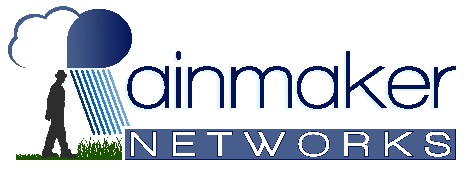Cloud Computing
There is a great deal of confusion about cloud computing.
This should set the record straight in as few words as possible.
There are three essential concepts that originally had separate
purposes, but when combined together form the concept of cloud
computing.
The first concept is cloud services.
It means any computer-based service that is available to you but is
not at your physical location. It is somewhere on the public
internet. It is called cloud because in technical diagrams depicting
networks, a cloud graphic has been the traditional representation of
the internet. A myriad of services can be cloud based - some are
common and some are not. Everyone uses cloud-based email, and
websites. Other cloud services are FTP sites for moving files from
place to place; lots of traffic cameras are available as cloud
services. Many GPS utilities use cloud-based maps and live traffic
information - all cloud-based. Think of it this way: anything that
you are using that is using information that is not at your location
is using a cloud service.
The second concept is remote desktop control. This
is the very convenient and now almost common-place practice of
remotely controlling a computer far away as if you were sitting in
front of it. Keyboard strokes and mouse clicks go one direction;
pixel changes go back the other way. The computer you are actually
sitting at and physically touching doesn't get any of the data nor
does it actually run any of the programs - it is just an interface.
All of the work happens on the pc that is far away from you, just
like it would if you were actually there. Lots of products have been
available over the years to accomplish this simple yet wonderful
capability: pcAnywhere, VNC, Timbuktu. Modern Windows and Mac
versions include remote capabilities built-in to the operating
system. Many people use remote desktop control to work from home by
accessing their desk pc's using a tool like this.
The third concept is not as easy to describe. It is virtualization.
The shortest way to describe it sacrifices a little bit of technical
accuracy, but is sufficient for the purposes here. Imagine a
computer running Windows. On that computer, we install a program,
just like we might install MS Word, only this program isn't a word
processor. It is a simulation environment. It creates a simulation
of a computer's hardware environment that is so realistic, another
copy of Windows, even a different version, can be installed within
it. It has simulated hard drives, simulated displays, simulated dvd
drive - everything. The operating system that is running within the
simulation environment doesn't even know that it isn't running on
real hardware. We can then start another instance of the simulated
environment on the original physical pc, and have three computers
running on one set of hardware: the actual physical machine and two
virtual machines. The virtual machines can do anything that a
physical machine can do. They are just a lot cheaper because we
didn't have to buy any additional hardware. Operating system and
application licenses still must be purchased, but we saved several
hundred dollars on hardware. When virtualization first became
possible, the main focus was to virtualize servers in order to avoid
the high hardware costs of servers in businesses that need multiple
servers. Instead of buying 4 physical servers, one server can be
purchased, and virtual machines setup on that one physical box to
save costs.
There are dozens of products that can provide virtualization
environments, but the most popular are Microsoft's HyperV, VMware's
vShpere, and XenServer form Citrix. These products are generally
intended to be setup and operated by IT staff on very powerful
server-class hardware. It is not unusual for a single physical
server to host as many as 8 or 10 virtual machines. Scaled-down
versions of virtualizations are available at teh desktop level as
well. Windows7 includes a feature called XPmode, which is actually a
virtual machine running within Windows7. Mac users in office
environments often will use virtualizing tools such as Parallels to
run a virtualized Windows XP or Windows 7 within the Mac OS.
In recent years, computational power, memory, and storage space have
made exponential improvements while costs have continued to come
down. Broadband internet access has become commonplace. These
factors have allowed for the marriage of the three concepts. We can
now give remote desktop control to workers by
connecting them to virtualized servers and workstations that
are all housed in a cloud service. This marriage
is known as cloud computing. The implementation
can be your hardware in leased space, or it can be leased hardware
in leased space, and there are a few other variations based on your
needs, but the concept is still basically the same.
The advantages are numerous: security is far better controlled. Data
backup can be far more robust. User mobility and access to data is
anywhere/anytime. Costs are lower. Speeds are higher. Disaster risk
is mitigated. Growth and expansion are now just software settings
rather than major hardware purchases and planning. Trying new
versions of critical applications is done in a free test environment
rather than involving a risky installation directly to a production
environment. Workers like the flexibility; management sees better operational
control; accounting sees lower and more
predictable costs; stake holders see higher productivity. These
factors are why it's a big deal.
One twist on the idea: private cloud is exactly the same technology
and driving factors, except that you use your own or leased hardware
at your own premises. This option reduces monthly lease costs while
retaining many of the cloud computing advantages.
Now you know the basics. If you would like to explore whether or not
cloud computing is right for your business, give us a call.

